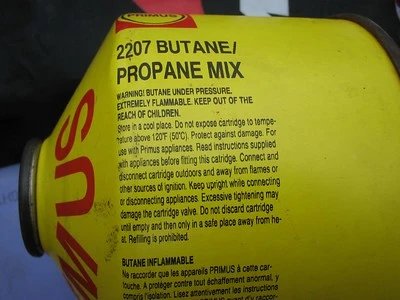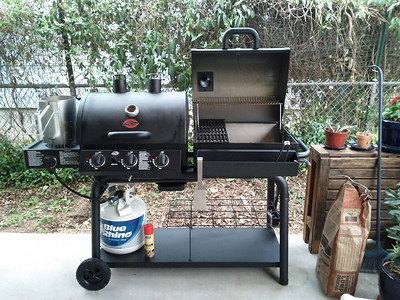
No, mixing butane with other fuels is not safe. Mixing butane with other fuels can lead to unpredictable reactions, including the risk of explosion or fire. Always follow safety guidelines and manufacturer’s instructions when using fuels.
Improper mixing can also produce harmful fumes and may damage equipment designed for a specific type of fuel. If you’re not sure about compatibility or safety, consult with professionals or experts in the field before attempting to mix any fuels. Below is a breakdown of the types of fuels commonly mixed with butane, along with their characteristics and common uses:
However, in industrial environments, mixing butane with other fuels like propane, isobutane, or natural gas is done under tightly controlled conditions, following strict safety guidelines. Experts in the field ensure the right proportions and take into account factors such as vapor pressure, boiling point, and energy content to produce a safe and effective fuel blend. This often results in products like LPG (Liquefied Petroleum Gas) that are widely used for various applications.
However, for individuals without the proper training and equipment, attempting to mix butane with other fuels is not safe. The risks include flammable gas leaks, explosions, fires, and the production of harmful fumes due to incomplete combustion. Incorrectly mixed fuels can also damage appliances and equipment that are not designed to handle such blends.
So, while mixing butane with other fuels can be safely done in an industrial setting by professionals, it is not recommended for individuals to try it on their own due to the significant risks involved. Always follow manufacturer guidelines and consult professionals when dealing with mixed fuels.
Read related articles: How to Determine Butane Quality?
Why Industrial Settings Are Different
Industrial settings are different in mixing butane with other fuels for several reasons:
Expertise Involved in Industrial Mixing: Professionals with specialized training and experience handle the mixing process. They understand the chemical properties and reactions involved, ensuring a safe and effective fuel blend.
Equipment and Technology Used to Ensure Safety: Industrial facilities have advanced equipment designed for safe mixing, storage, and handling of volatile substances like butane and other fuels. This equipment is rigorously tested to meet safety standards.
Regulatory Oversight: Industrial operations are subject to strict regulations and frequent inspections to ensure that all safety protocols are being followed. This creates an additional layer of safety that isn’t usually present in non-industrial settings.
Types of Fuels Commonly Mixed with Butane
Propane
Characteristics:
- Lower boiling point compared to butane (-42°C or -44°F)
- Higher vapor pressure
- Higher energy content compared to butane
Common Uses:
- Grills and BBQs
- Home heating
- Portable stoves
When Mixed with Butane:
- Often used in LPG (Liquefied Petroleum Gas) to create a versatile fuel blend.
- The mixture can work well in a variety of temperatures and conditions.
- Typically has a higher vapor pressure and a lower boiling point than pure butane, making it easier to ignite.
Isobutane
Characteristics:
- A structural isomer of butane with slightly different properties
- Similar boiling point to butane but often with a marginally lower vapor pressure
- Commonly used as a refrigerant
Common Uses:
- Aerosol propellants
- Refrigeration
When Mixed with Butane:
- Used in some portable fuel canisters to optimize cold-weather performance.
- Like butane-propane mixes, isobutane-butane blends are sometimes used in camping stoves and lanterns.
Natural Gas
Characteristics:
- Primarily composed of methane
- Lower energy density compared to butane
- Gaseous at room temperature and not typically stored as a liquid
Common Uses:
- Residential heating and cooking
- Electricity generation
- Industrial processes
When Mixed with Butane:
- Can be used to augment natural gas supplies, especially in colder climates where butane’s higher energy content can be beneficial.
- However, mixing is usually performed in industrial settings following strict regulations, as the two gases have different properties and combustion characteristics.
It’s essential to note that while these fuels can be mixed with butane for various applications, the mixing should only be done by professionals following strict safety guidelines to ensure a safe and efficient fuel blend.
What Happens When You Mix Butane and Propane?
Mixing butane and propane can be done under controlled conditions and is actually common in some commercial fuel blends, like LPG (Liquefied Petroleum Gas). However, it should only be done by professionals who understand the properties, compatibility, and reactions of these fuels. These blends are carefully formulated to achieve specific burn characteristics and are subject to stringent safety guidelines.
When mixed inappropriately or without proper controls, butane and propane can pose safety risks. Both are flammable gases, and their mixture can be highly volatile. Incorrect proportions can lead to incomplete combustion, which can produce harmful fumes or carbon monoxide. There’s also an increased risk of explosion or fire if the mixture is not handled and stored correctly.
The general characteristics of a butane-propane mixture.
- Vapor Pressure: Similarly, the vapor pressure of the mixture will be between that of pure butane and pure propane. This has implications for storage and combustion. Higher vapor pressure can make the fuel easier to ignite under certain conditions, but it also means that the storage containers must be designed to withstand the increased pressure.
- Boiling Point: The boiling point of the mixture will be intermediate between that of pure propane and pure butane, effectively allowing the mixture to vaporize at a wider range of temperatures compared to the individual components.
- Energy Content: The mixture will indeed have an energy content that is between that of pure butane and pure propane. This makes it a versatile fuel, suitable for a variety of applications where either a high or low energy content might not be optimal.
Blends of butane and propane are commonly used in portable camping stoves, gas grills, and in some cases, motor vehicles, precisely because they offer a compromise between the properties of the two pure substances. They are engineered to provide reliable performance over a range of conditions. However, it’s important to handle and store these blended fuels with care, given their flammable and potentially explosive nature. Always follow the manufacturer’s guidelines and safety precautions.
Read related article: Butane Evaporation Temperature (How Long Does It Take)
When to Consult Professionals
Cases Where Professional Advice is Necessary:
- When you’re dealing with large quantities of butane or other fuels
- If you’re considering mixing different types of fuels for a specific application
- When using fuels in a commercial or industrial setting
- If you encounter unusual smells, leaks, or other warning signs when using or storing fuels
What Kinds of Experts to Consult:
- Chemical engineers who specialize in fuel technology
- Safety consultants experienced in handling volatile substances
- Professionals in the specific industry where the fuel will be used, such as heating or cooking experts
- Regulatory authorities that oversee fuel handling and storage
Consequences of Neglecting Professional Advice:
- Increased risk of fire or explosion
- Potential legal repercussions, including fines or imprisonment
- Damage to or malfunction of equipment, which can be costly to repair
- Risk of producing harmful emissions or toxic fumes
Consulting professionals in these situations ensures that you’re taking the safest and most effective approach to handling butane and other fuels.
Conclusion
When it comes to the question, “Is Mixing Butane with Other Fuels Safe?”, the answer largely depends on the context in which the mixing is occurring. While it’s possible to safely mix butane with other fuels like propane, isobutane, or natural gas in industrial settings, doing so without proper knowledge and precautions can be extremely risky and potentially dangerous.
In controlled industrial environments, experts with specialized training use advanced equipment to mix fuels under stringent safety protocols. These operations are also governed by strict regulations, adding an extra layer of safety. For everyday consumers or those without specialized training, attempting to mix butane with other fuels can lead to harmful or even disastrous consequences, such as explosions, fires, and the release of toxic fumes.
Therefore, if you find yourself in a situation where you’re considering mixing butane with another fuel, it’s crucial to consult professionals. Whether you’re dealing with large quantities, commercial applications, or even smaller DIY projects, expert guidance is essential for ensuring safety and effectiveness.

Jeremy is a highly experienced professional propane technician with over 21 years of experience in the industry. Throughout his career, he has gained extensive knowledge and expertise in propane gas installation, maintenance, and repair, as well as in ensuring safety and compliance with industry standards. Mike has worked with various residential, commercial, and industrial clients, providing top-notch services and solutions to meet their propane needs. He is dedicated to his craft and passionate about delivering exceptional service to his clients.




